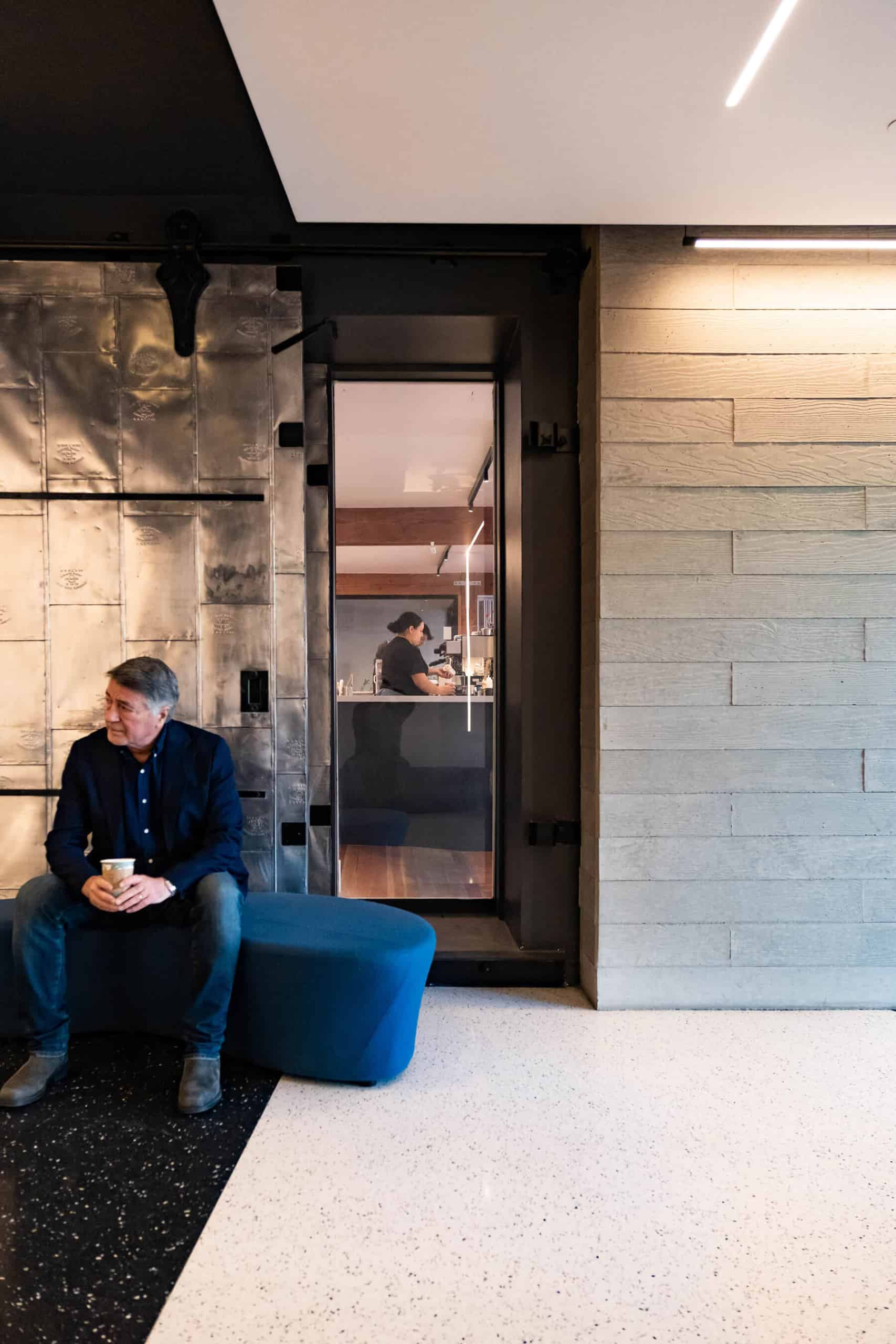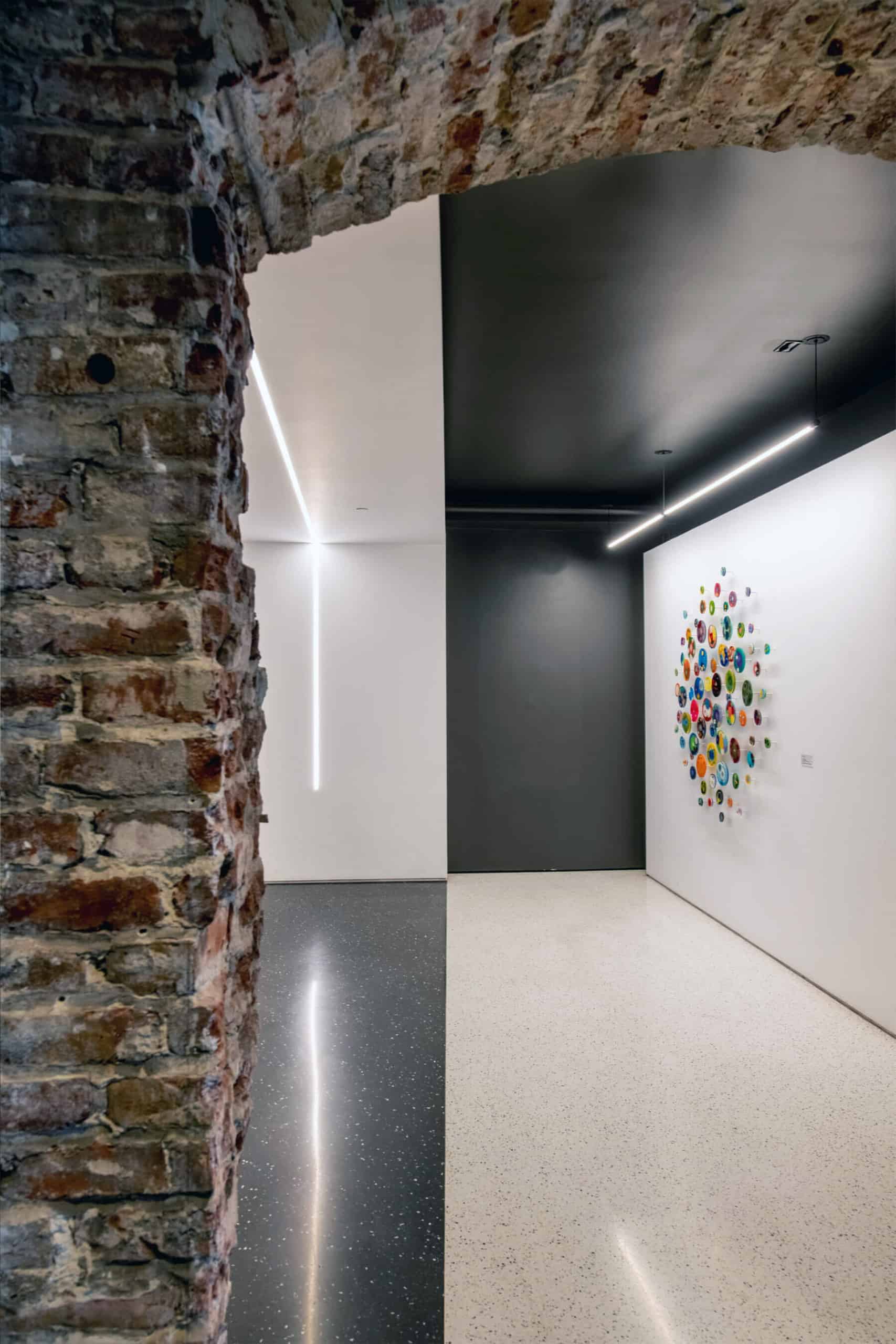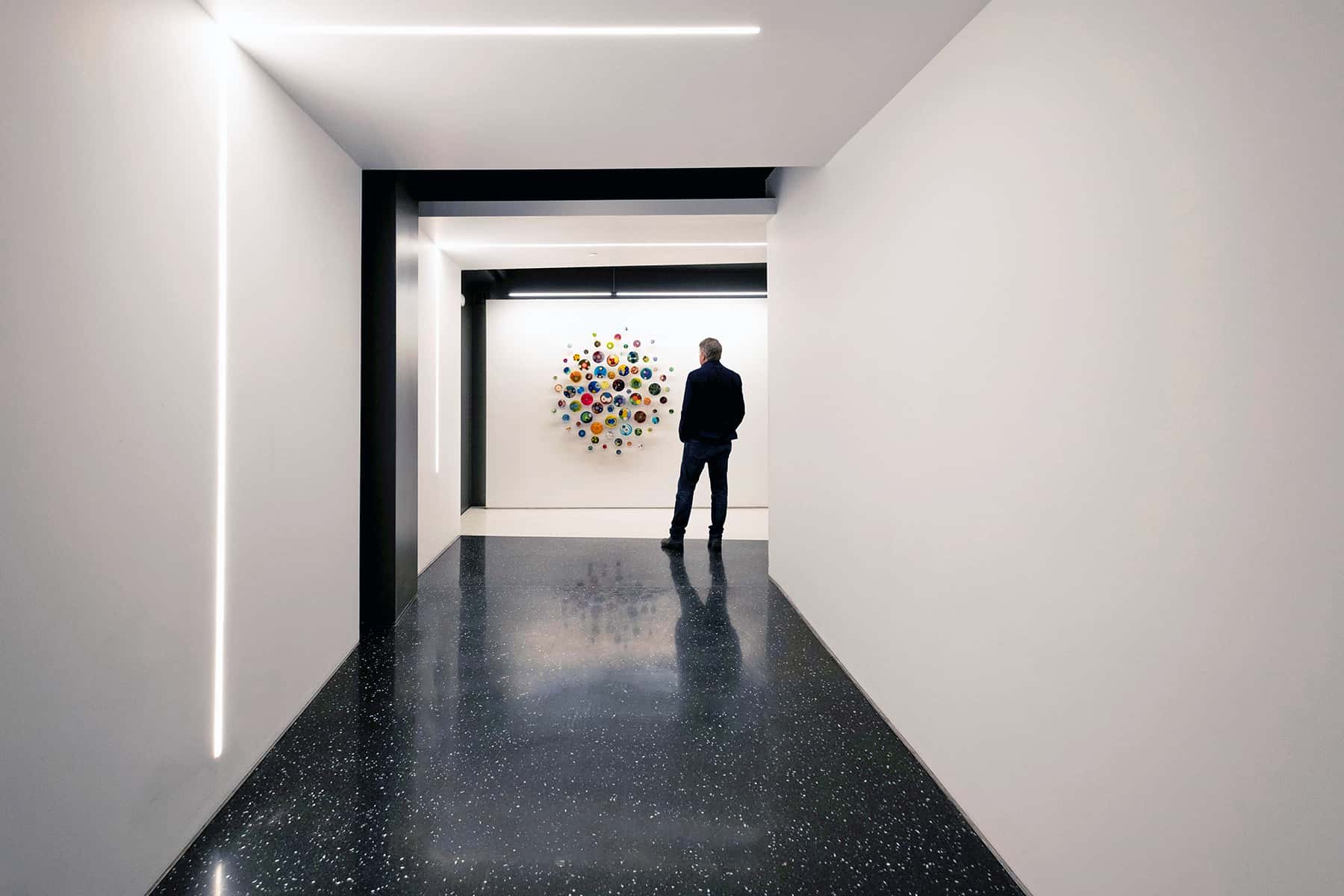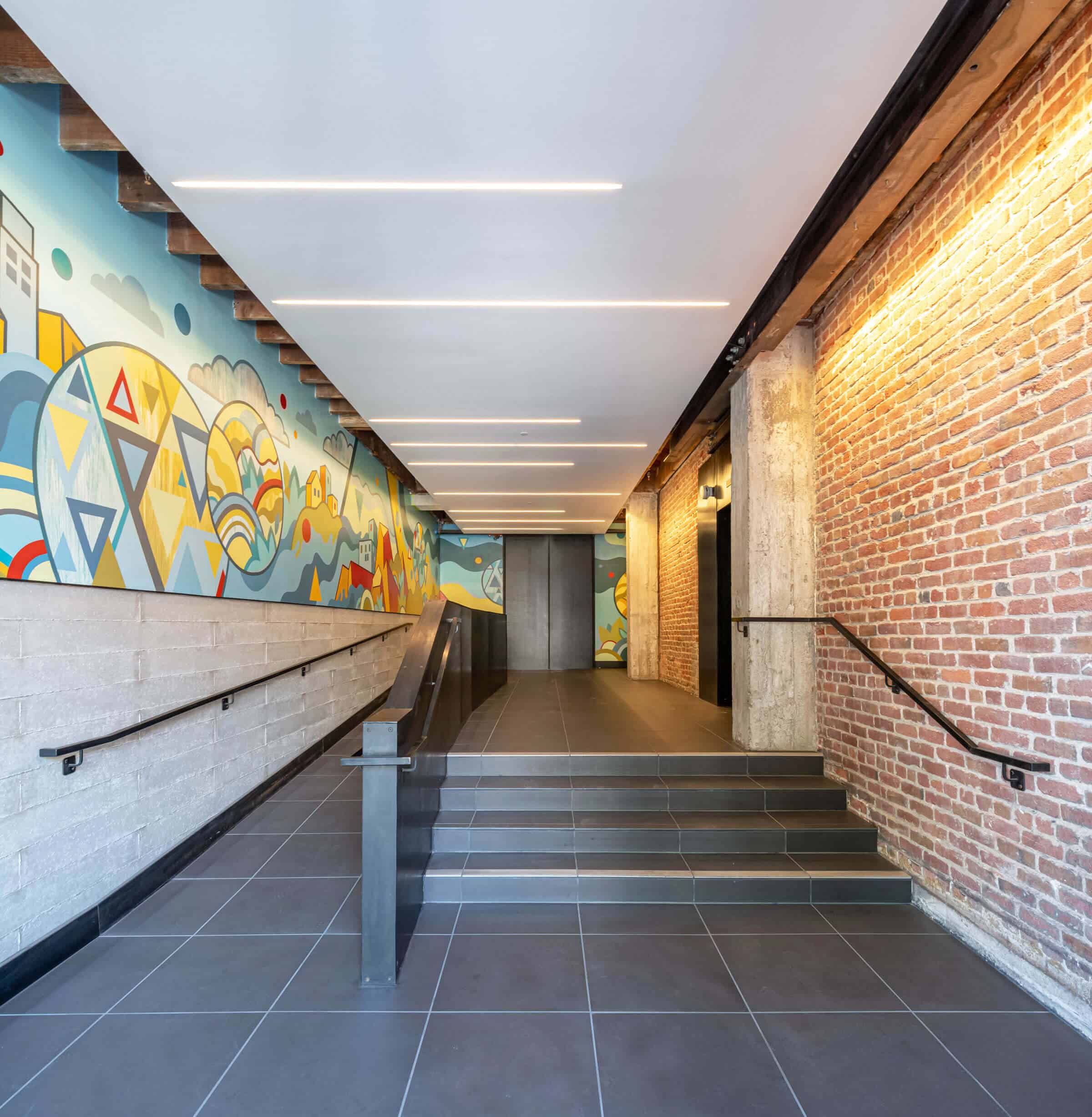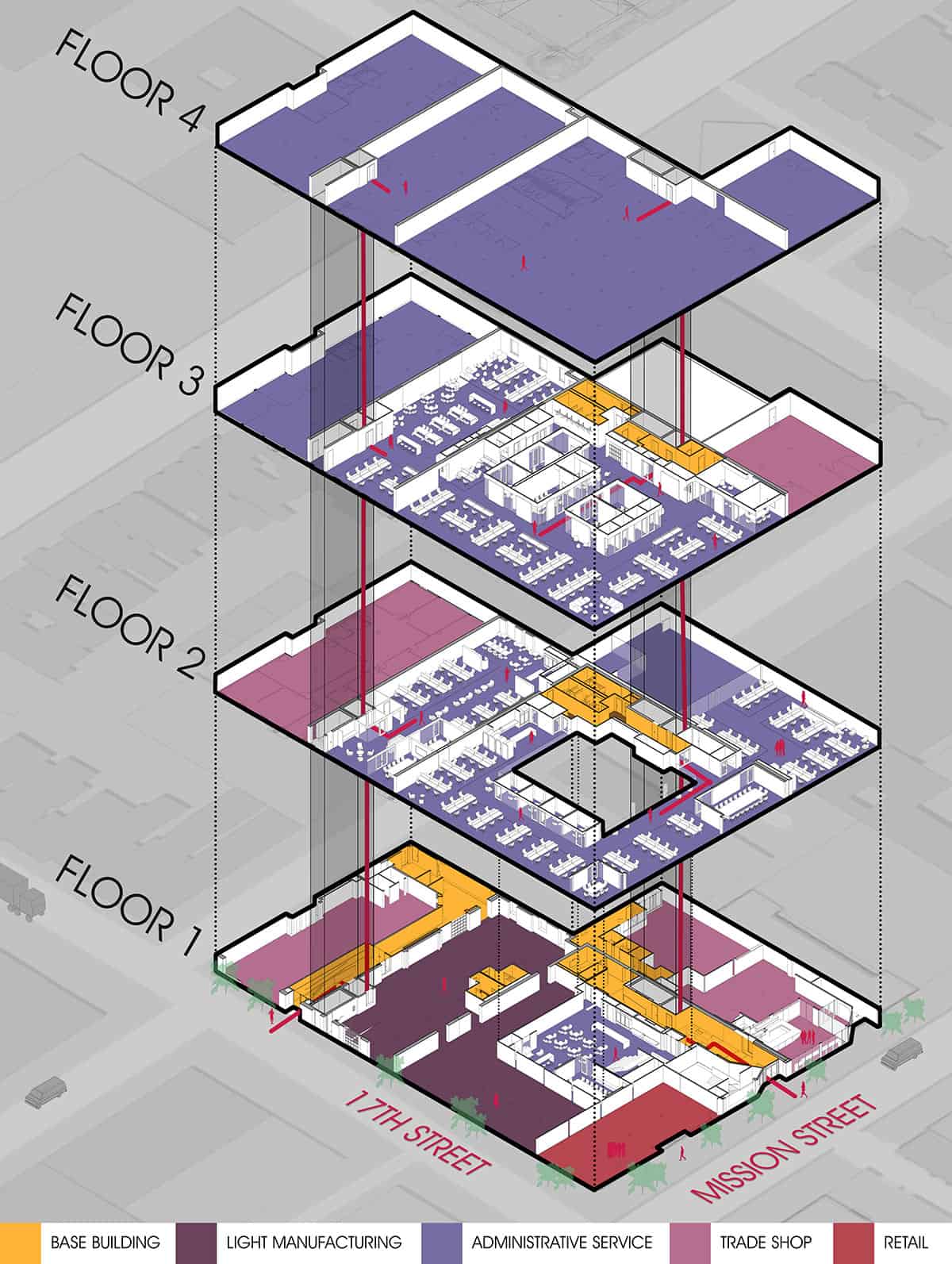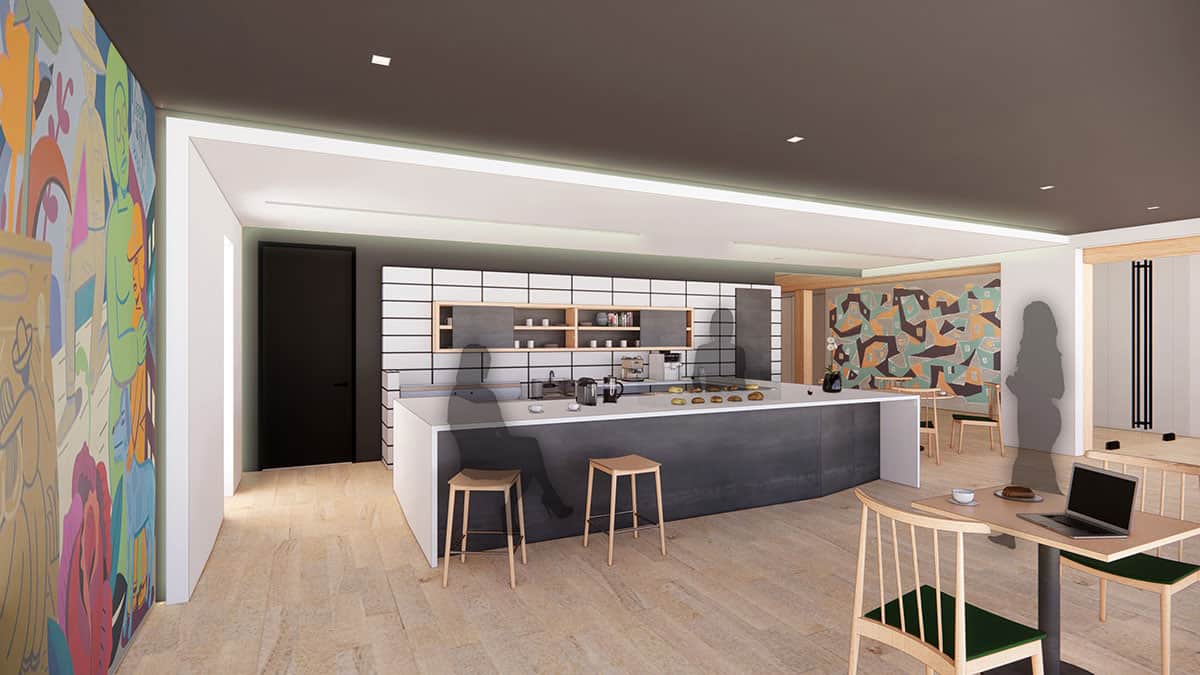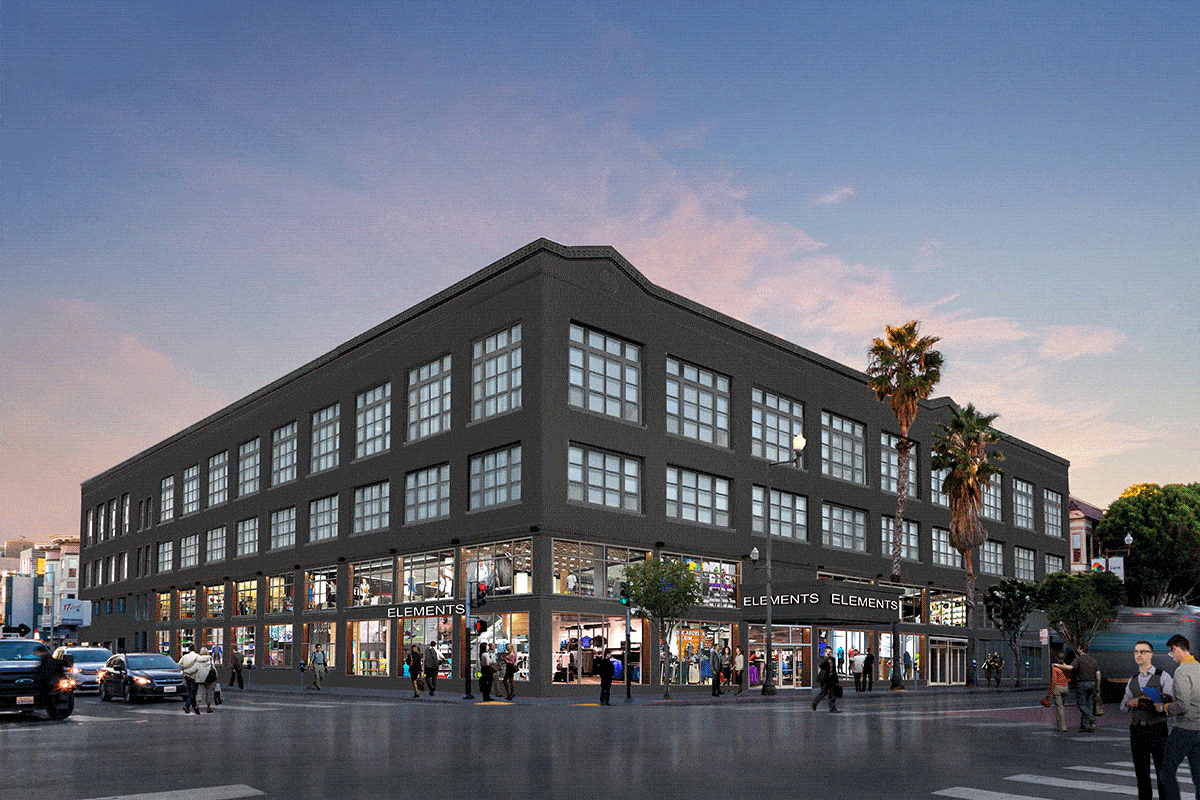

2101 Mission Street
Re-energizing a building can be a catalyst for transforming an entire neighborhood. This was the goal for the historic four-story Redlick Building that stands at the corner of Mission and 17th Street in San Francisco. Originally three separate structures built between 1907 and the 1920s, they were eventually merged into one building with 132,000 SF of rentable space.
Presented with a dilapidated building with tremendous potential, FENNIE+MEHL worked closely with the new building owner and their land use attorney to negotiate strict mixed-use zoning constraints (37% retail, 36% office, 27% PDR/trade artist) to plan out a phased repositioning that touched all parts of the structure to help revitalize the neighborhood and attract a new class of tenant. As an embedded business partner, F+M provided a variety of design and value engineering scenarios for each of the remodeled areas to help guide the owner’s real-estate strategy and renovation plans for the building. The goal was to reposition the building with cost-effective high-impact renovations to attract reputable professional office, PDR, and retail tenants, all without losing the building’s identity, authenticity, and relevancy to the vibrant multi-cultural Mission district.
To upgrade the building exterior, the scope of work included waterproofing and repairing the exterior façade along with new simple up-lighting, repairing and replacing damaged windows, new storefront entries, the historic preservation of the original Mission Street building marquee, and creating a modern exterior paint palette. FENNIE+MEHL moved away from the original chaotic mixture of colors to an elegant dark blue and grey that completely changed the character and perception of the building from being low-rent to a more upscale complex without overdesigning an exterior that would be seen as too fancy or insensitive to the neighborhood.
Interior base building upgrades started with designing a 17,000 SF creative tech office space and its elevator lobby on the third floor. The design incorporated open office work areas, meeting and phone rooms, a large all-hands break area, new lighting and finishes throughout, as well as a new HVAC mechanical system. The architects also repositioned and reconfigured the opening of the 2nd floor mezzanine to allow for a better mix of future retail, office, and PDR tenants and modernized both building elevators.
To honor the neighborhood’s multicultural vibrancy and art scene, the design team integrated murals by local artists in key areas throughout the property, including in a small ground floor neighborhood specialty coffee bar that boasts a mural by Jason Jagel, a local artist whose twelve commissioned public artworks in San Francisco have helped transform other neighborhoods.
Next the firm turned to major renovations to both building entry lobbies in order to radically transform the perception that the building is a great fit for creative high-tech office end users. The 17th street building lobby was first. FENNIE+MEHL removed years of clutter and a haphazard legacy of renovations, and redesigned the internal stair and ramp, clad surfaces with blackened metal, exposed original brick and concrete surfaces, integrated new LED lighting, and adorned an entire wall with another colorful mural by local artist David Polka.
The main lobby on Mission Street, slated for completion by the end of 2020, is sure to catch the eye of passers-by as well as appeal to a variety of tenants. To eliminate the feeling of a long tunnel, the designers used alternating stripes of jet black and bright white terrazzo flooring and continued the black and white forms up the wall and into the ceiling elements. This welcoming lobby breathes new life into the building while inviting intrigue: What is this place? Who works here?
And in this way, the building is now starting a new conversation on Mission Street.
What we appreciated the most was their flexibility. This team listens to our feedback and thoughtfully proposes alternative design solutions that are more cost effective, while not sacrificing artistic taste. At the end of the day, the ability to be creative and flexible with our needs, that’s what we are looking for.
Ryan Payne, Principal, Four Corners Properties
Photography and artist renderings: FENNIE+MEHL

